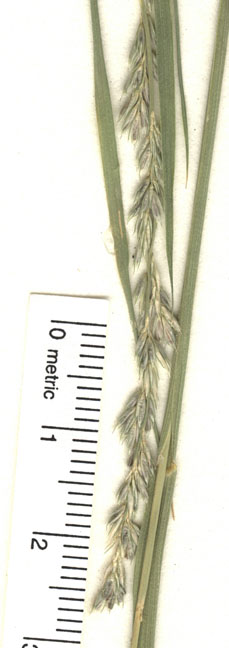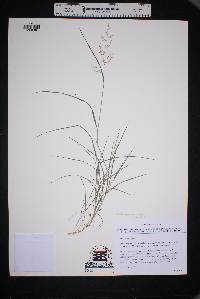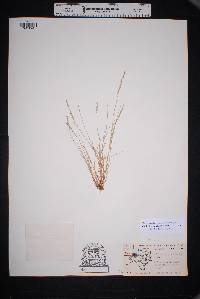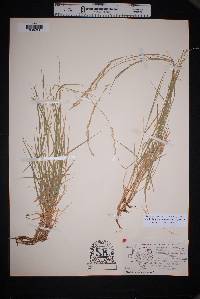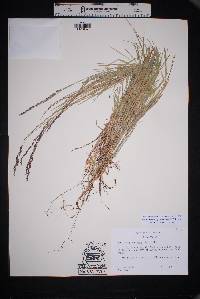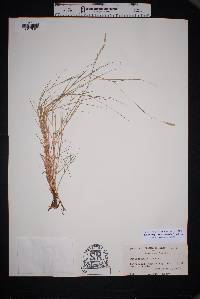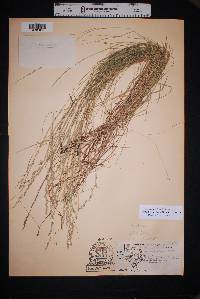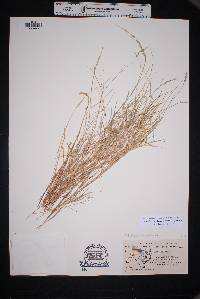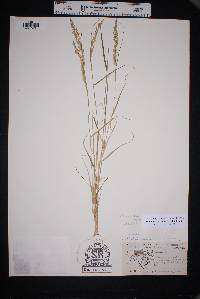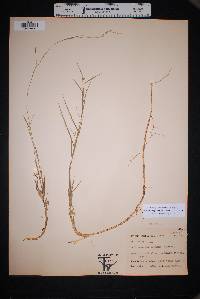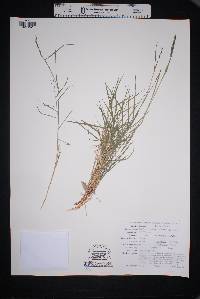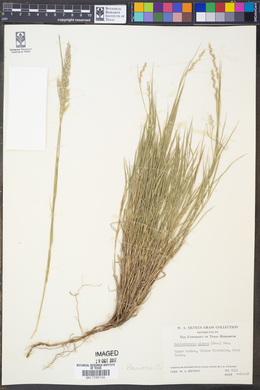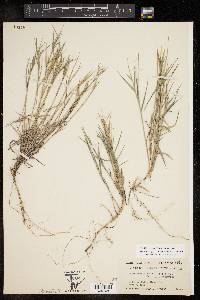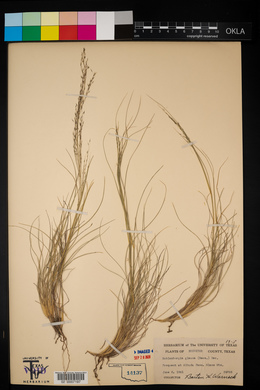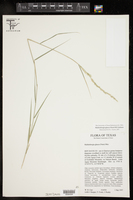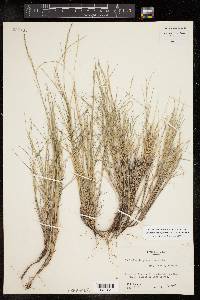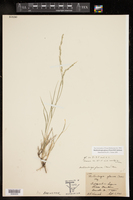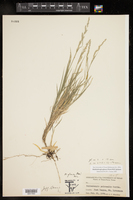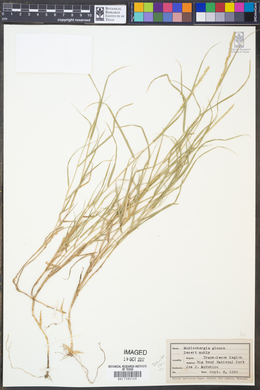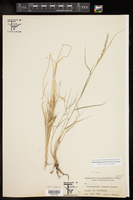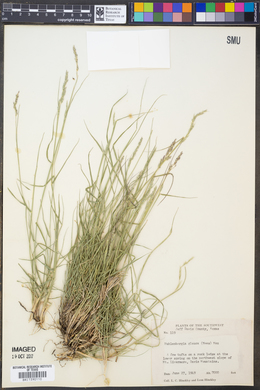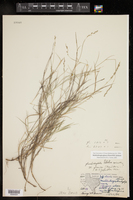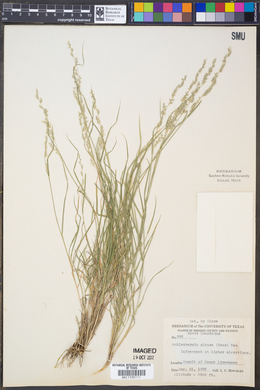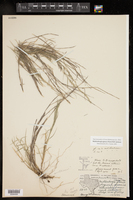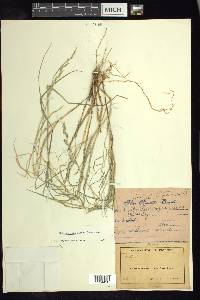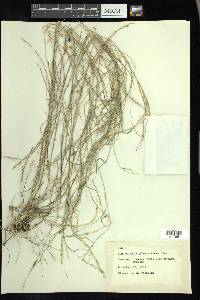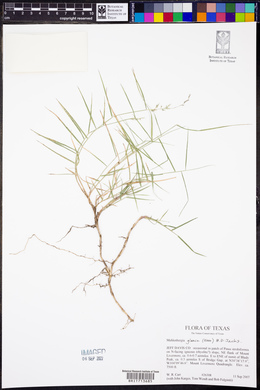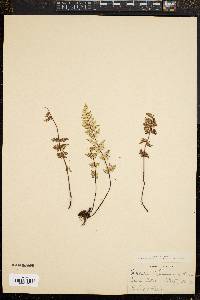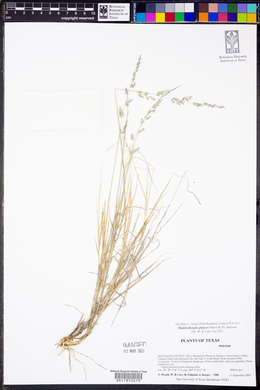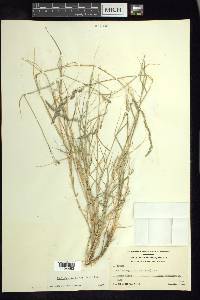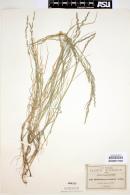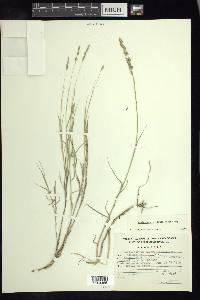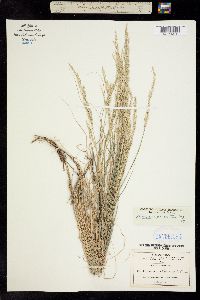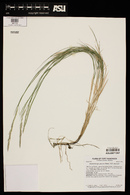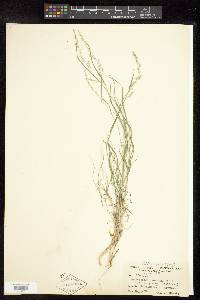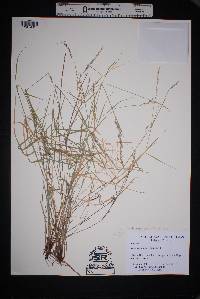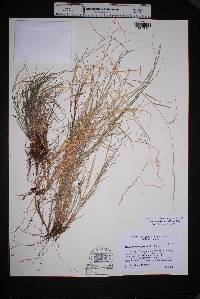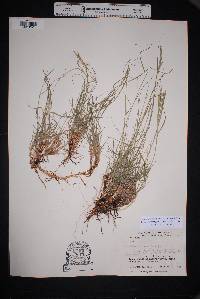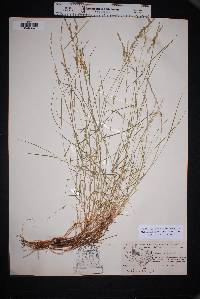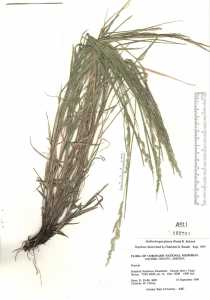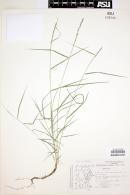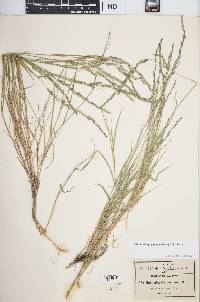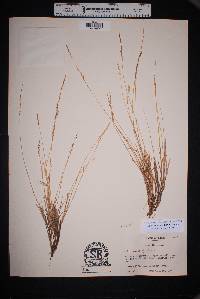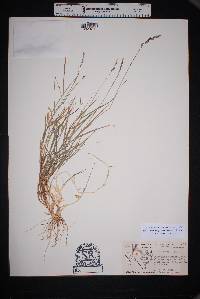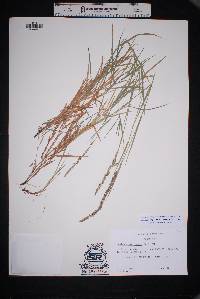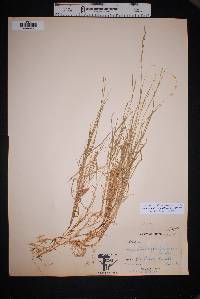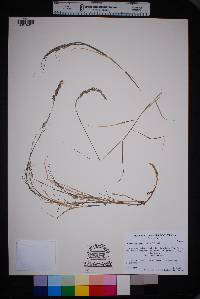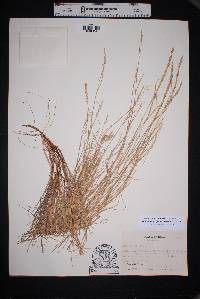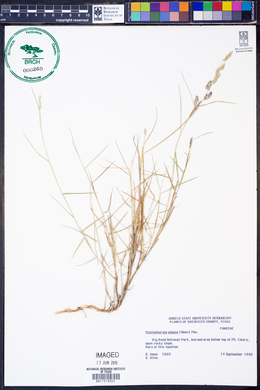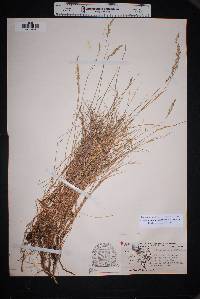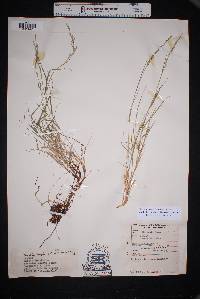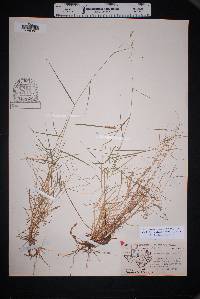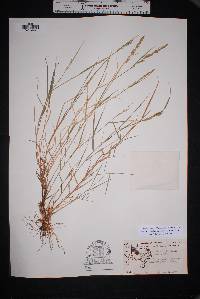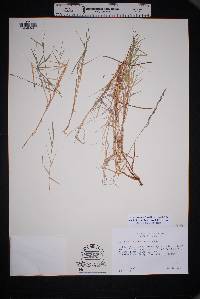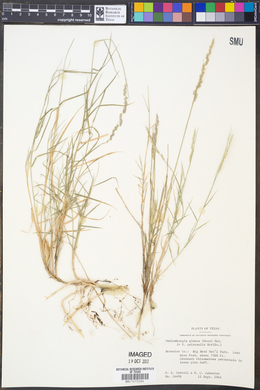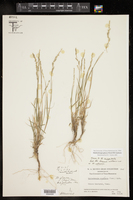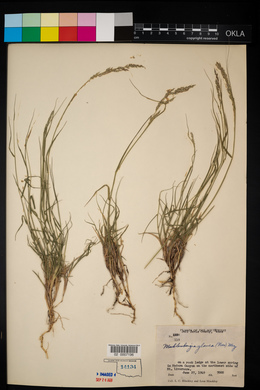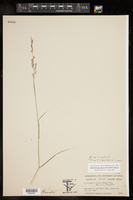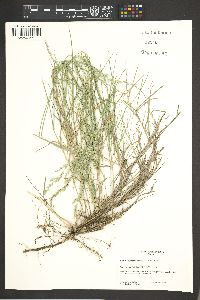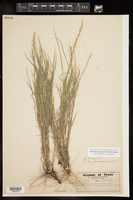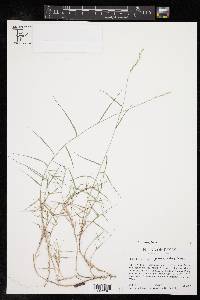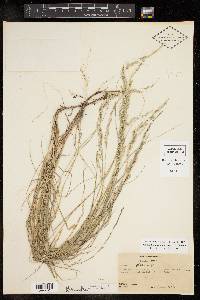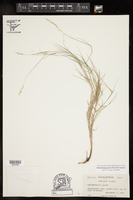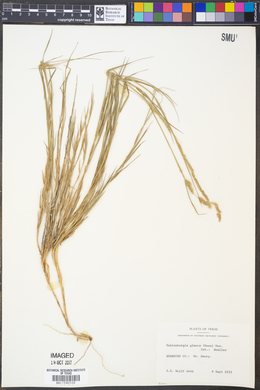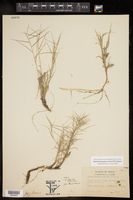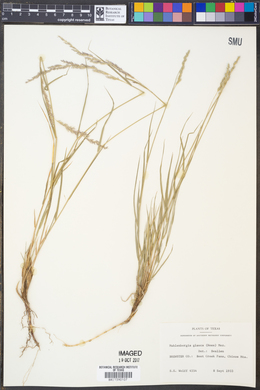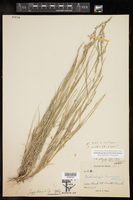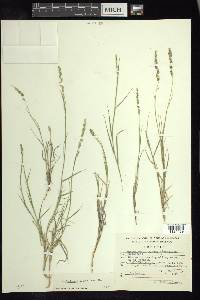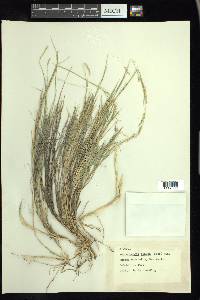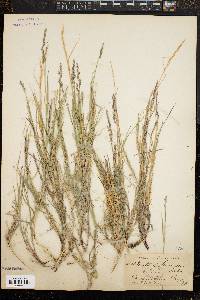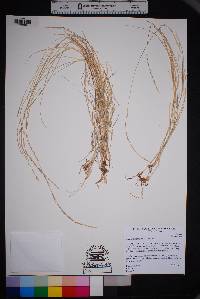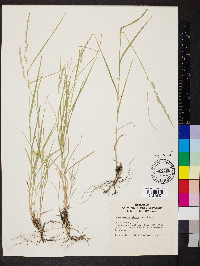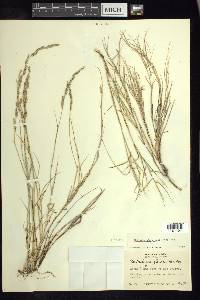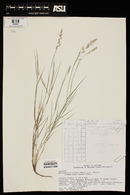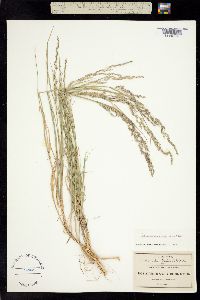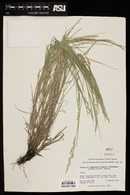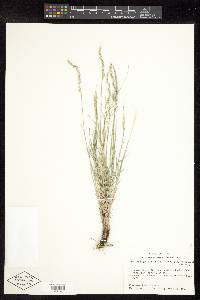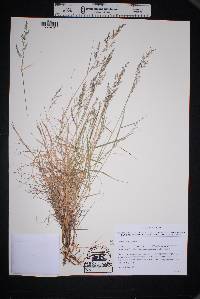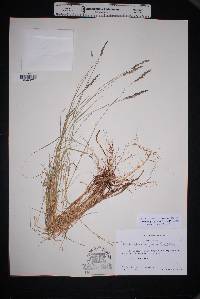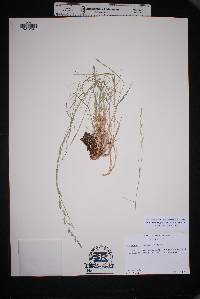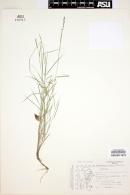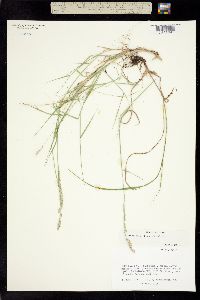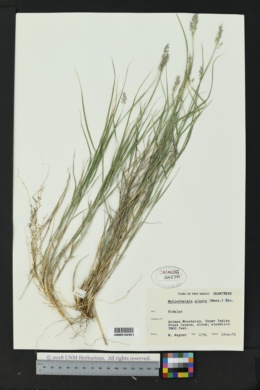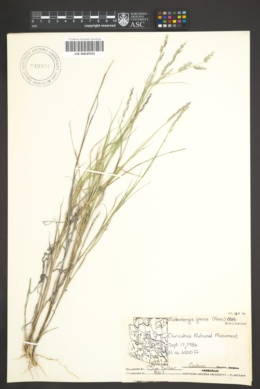Muhlenbergia glauca
|
|
|
|
Family: Poaceae
Desert Muhly
[Agrostis glauca, moreMuhlenbergia huachucana Vasey, Muhlenbergia lemmonii Scribn.] |
Plants perennial; rhizomatous, rhizomes slender, well-developed. Culms 25-60 cm tall, 1-2 mm thick, often decumbent, sometimes erect; internodes mostly scabrous, retrorsely hispidulous below the nodes. Sheaths longer than the internodes, scabridulous; ligules 0.5-2 mm, truncate to obtuse, erose or lacerate; blades 4-12 cm long, 1-2.6 mm wide, flat to involute distally, not arcuate, scabrous abaxially, hirsute or scabrous adaxially. Panicles 4-12(17) cm long, 0.3-2.4 cm wide, contracted, interrupted below; branches 0.3-3 cm, usually appressed, occasionally diverging up to 30° from the rachises; pedicels 0.1-1.2 mm, scabrous to hirsute. Spikelets 2.4-3.5 mm. Glumes equal, 1.5-3.5 mm, 1-veined, veins scabrous, apices acute or acuminate, usually awned, awns, if present, to 1.5 mm; lemmas 2.4-3.4 mm, elliptic, pubescent on the lower the 1/2 of the midveins and margins, hairs to 0.6 mm, tawny, apices acuminate to acute, awned, awns 0.1-3(5) mm; paleas 2.2-3.4 mm, elliptic, intercostal region pubescent on the lower 1/2, apices acuminate to acute; anthers 1.8-2.4 mm, orange. Caryopses 1.7-2 mm, fusiform, brownish. 2n = 60. Muhlenbergia glauca grows on calcareous rocky slopes, cliffs, canyon walls, table rocks, and volcanic rock outcrops, at elevations of 1200-2780 m. Its range extends from the southwestern United States to central Mexico. M. glauca resembles M. polycaulis, but differs in its shorter lemma awns and strongly rhizomatous habit. FNA 2003, Gould 1980 Common Name: desert muhly Duration: Perennial Nativity: Native Lifeform: Graminoid General: Rhizomatous perennial with slender, well-developed rhizomes, stems 25-60 cm tall, 1-2 mm thick, often decumbent, sometimes erect, with mostly scabrous internodes, retrorsely hispidulous below the nodes, sheaths open minutely roughened. Vegetative: Blades 4-12 cm long, 1-2.5 mm wide, flat to involute near tip, scabrous below, hirsute to scabrous above, ligules 0.5-2 mm membranous, erose or lacerate. Inflorescence: Contracted panicles 4-12 cm long, 0.5-2.5 cm wide, interrupted below, branches 0.5-3 cm, usually appressed but occasionally diverging up to 30 degrees from rachises, pedicels 0.1-1 mm, scabrous to hirsute with spikelets 2.5-3.5 mm, glumes equal, 1.5-3.5 mm, apices acute, with awns to 1.5 mm; lemmas 2.5-3.5 mm, elliptic and pubescent on the lower half of the midveins and margins, hairs to 0.5 mm, tawny, apices acuminate to acute, awned with awns 0.1-3 mm. Ecology: Found on rocky slopes, along cliffs and canyon walls, especially on calcareous and volcanic rock outcrops from 4,000-9,000 ft (1219-2743 m); flowers July-October. Notes: Resembles M. polycaulis but differs in having shorter lemma awns and its strongly rhizomatous habit. Ethnobotany: Unknown Etymology: Muhlenbergia is named for Gotthilf Heinrich Ernst Muhlenberg (1753-1815) a clergyman and botanist from Pennsylvania; glauca means glaucous from the Greek meaning bluish gray. Synonyms: Muhlenbergia lemmonii Editor: SBuckley, 2010 |

